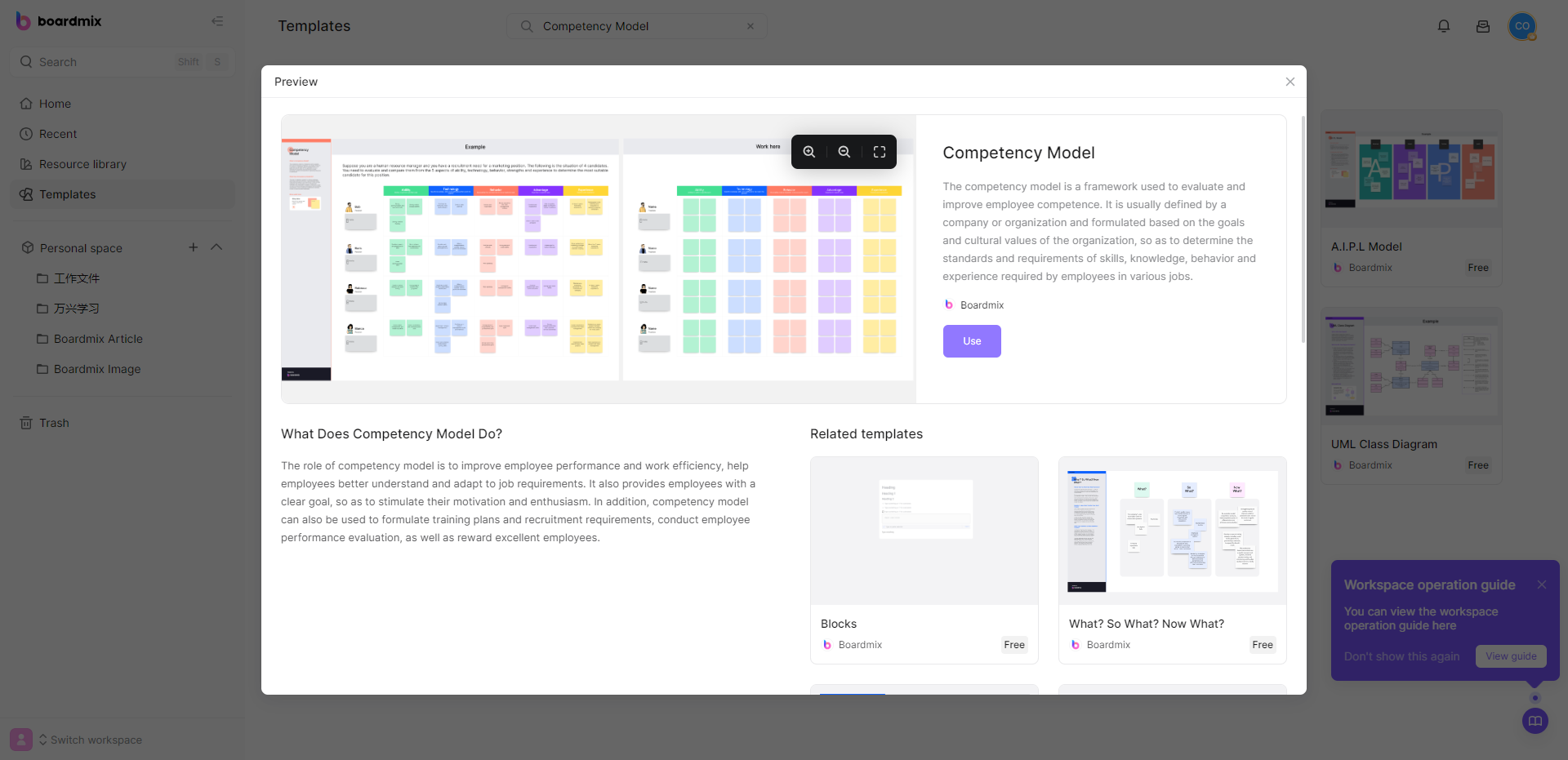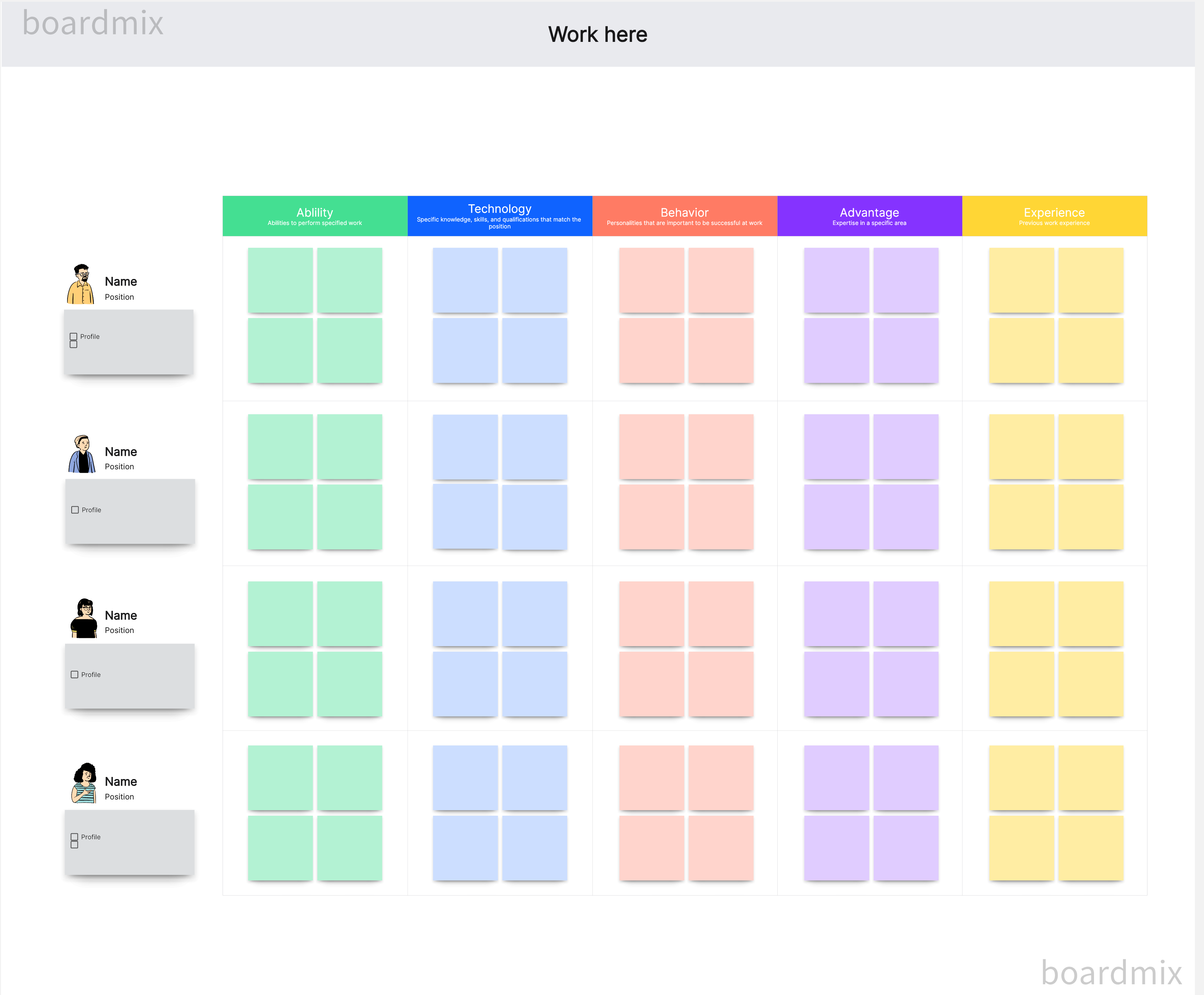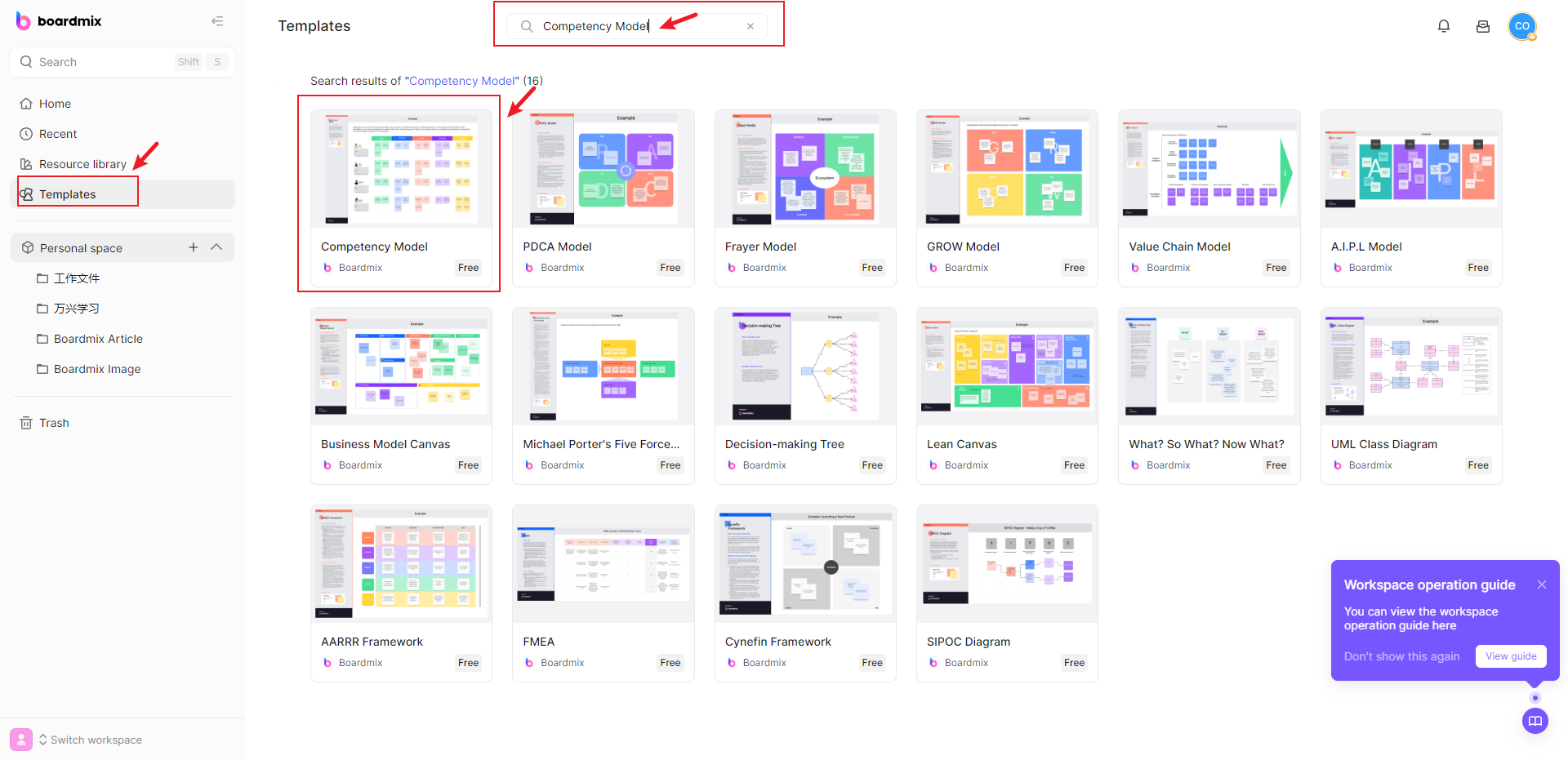What is a Competency-Based Training Model
The competency-based training model is a special training mode designed to help individuals develop and master specific skills and abilities to improve their performance at work. Here are some key features of this model.

1. Competency-Centered
The competency-based training model focuses on helping individuals master specific abilities or skills, rather than traditional knowledge learning. These abilities can be technical, such as programming or mechanical repair, or non-technical, such as leadership or teamwork.
2. Targeting Practical Performance
The goal of this model is not only to learn and understand new knowledge but more importantly to apply this knowledge and demonstrate these abilities in actual situations. Therefore, this model emphasizes practical learning and application.
3. Customized Learning
The competency-based training model allows the training plan to be customized according to each individual's needs and capabilities. This approach allows individuals to learn at their own pace and in their way, ensuring that they acquire the necessary skills and abilities.
4. Structured Evaluation
This model emphasizes systematic and structured evaluation of individual capabilities and skills. This is usually done through some form of certification or certificate to prove that the individual has reached the required ability level.
5. Continuous Development
This model encourages individuals for continuous learning and development to adapt to changing work environments and demands. This is achieved by providing ongoing feedback and support, as well as opportunities for further learning and development.
The competency-based training model provides a method of focusing training on practical abilities and skills to help individuals improve their performance at work. This approach has been applied in various work environments and has proven its effectiveness.
Benefits of Using the Competency-Based Training Model
The competency-based training model is a training method that focuses on the development of employee skills and abilities. It offers many benefits that can help companies improve employee job performance and achieve better business results.
1. Improve Work Efficiency
By providing targeted ability and skill training for employees, their work efficiency can be improved. Employees with the necessary skills and abilities can complete work tasks more effectively.
2. Enhance Competitive Advantage
Companies with skilled and capable employees can gain an advantage in competition. It can help the company provide higher-quality products and services, thereby attracting and retaining customers.
3. Reduce Labor Costs
Competency-based training can reduce the need for retraining and recruiting new employees, thereby reducing labor costs. Effective training for existing employees can improve their skills, reducing the need to find and train new employees.
4. Increase Employee Satisfaction
By providing continuous career development opportunities, employee satisfaction and loyalty can be improved. When employees see the company investing in their personal development, they may be more enthusiastic about contributing to the company.
5. Enhance Organizational Flexibility
Organizations with a wide range of skills and abilities among their staff can adapt to market changes more quickly. Whether it's introducing new technology, launching new products or services, or changing business direction, having employees with the necessary skills can help companies successfully adapt to these changes.
Using the competency-based training model in practice brings multiple benefits, making this model increasingly popular in modern enterprises.

How to Identify the Competencies Required for Your Organization
Understanding and identifying the competencies your organization needs is key to developing effective employee training and development plans. Here are some steps to help you determine the required competencies.
1. Identify the Strategic Goals of the Organization
First, you need to clearly understand the strategic goals of your organization. These goals should explicitly indicate what level your organization expects to reach in the future. Once these goals are determined, you can identify the key competencies needed to achieve these goals.
2. Analyze Job Requirements
Each job has its specific duties and tasks that require certain skills and knowledge to complete. By analyzing these job requirements in detail, you can identify the core competencies required for each position.
3. Conduct a Competency Gap Analysis
Competency gap analysis can help you understand what gaps exist between employees' current competency levels and those required by the organization. This involves assessing employees' current abilities and comparing them with expected capabilities.
4. Refer to Industry Standards
Looking at industry standards and best practices is also a good method. This can help you understand what skills and abilities employees of successful organizations in your industry or field usually need.
5. Get Feedback
Asking employees, managers, and stakeholders what they think are necessary capabilities for an organization is also a useful method. Their feedback can provide you with perspectives on understanding organizational capability needs from different angles.
By going through these steps, you can identify the key competencies your organization needs and develop targeted employee training and development plans based on this.

How to Design a Training Program that Aligns with Your Organization’s Goals
Designing a competency-based training plan that aligns with organizational goals is a complex and important process. Here are some steps and strategies to help you create an effective competency-based training plan.
1. Identify Key Competencies
First, you need to clarify the organization's goals and identify the key competencies needed to achieve these goals. This may include professional skills such as programming or data analysis, or soft skills such as teamwork or leadership. When identifying key competencies, consider consulting with department leaders, employees, and stakeholders.
2. Assess Current Competency Levels
Conduct a comprehensive assessment of employees' current competency levels to understand how they perform in terms of key competencies. You can use online surveys, interviews, or observations to collect this information. The assessment results will help you determine training needs.
3. Set Learning Objectives
Based on your organizational goals and employees' existing competency levels, set clear learning objectives. Each learning objective should be specific, measurable, and related to a specific competency.
4. Design Learning Content and Methods
Design training content and methods that can help employees achieve their learning objectives. You can choose various learning methods such as online courses, seminars, simulation exercises, project practices, etc. Remember, it is best to choose ways that can achieve experiential learning.
5. Implement Training Plan
Once the training plan is ready, you can start implementing it. Make sure all employees understand the training they need to complete and the objectives of the training. At the same time, provide the necessary support and resources to help them complete the training.
6. Monitor and Evaluate Training Effectiveness
Through regular monitoring and evaluation, you can understand whether the training plan is effective, whether employees have achieved their learning objectives, and whether there are areas for improvement. The evaluation results should be fed back into the training plan for necessary adjustments.
Designing a competency-based training plan requires clear goals, detailed planning, and continuous evaluation. Through such training, you can help employees enhance their capabilities, to better support organizational goals.

How to Implement the Competency-Based Training Model Effectively
The competency-based training model aims to enhance employees' key competencies and skills to help the organization achieve its goals. Effectively implementing this training model requires a clear organizational strategy. Here are some steps and tips to help you successfully implement a competency-based training model
1. Understand Organizational Goals
To effectively implement competency-based training, you first need to clearly understand your organization's strategic goals. This will help you determine which competencies are key and what type of training needs to be provided for employees.
2. Identify Key Competencies
Once you understand your organizational goals, the next step is to identify what competencies employees need to help achieve these goals. This may include technical skills, management skills, or other types of professional skills.
3. Assess Current Employee Competency Levels
Knowing what competencies you need, it is important to assess the current competency levels of employees. This can be achieved in various ways, including individual assessments, peer reviews, and superior feedback.
4. Design and Develop Training Plans
Based on your needs and the current competency levels of employees, design and develop a targeted training plan. This plan should clarify how each training activity helps employees enhance their capabilities.
5. Implement Training Plan
After designing the training plan, it's time for implementation. Provide necessary support and resources for employees to ensure they can complete all training activities.
6. Monitor and Evaluate Effects
The last step is to monitor and evaluate the effects of training. By regularly reviewing data and collecting feedback, you can understand whether your training plan is producing expected results and whether adjustments are needed.
Implementing a competency-based training model successfully, it requires a clear strategy, targeted training plans, as well as continuous monitoring and evaluation. By following these steps, you can ensure that your employees receive maximum support in enhancing their capabilities.

How to Evaluate the Effectiveness of the Competency-Based Training Model
Evaluating the effectiveness of a competency-based training model is an important step in understanding its impact on the organization and employees. Here are some possible evaluation methods.
1. Set Evaluation Criteria
Before conducting an evaluation, you need to determine the evaluation criteria. These criteria should be related to your organizational goals and learning objectives of the training plan. Possible evaluation criteria include improvement in employee capabilities, enhancement in employee satisfaction, improved job performance, etc.
2. Collect Feedback
Collecting feedback from employees is an important part of evaluating training effectiveness. You can understand how employees feel about the training, where they think they have improved, and what they think can be improved through surveys, interviews, or group discussions.
3. Observe Behavioral Changes
Observing employees' daily work behavior is also a good way to evaluate training effectiveness. If employees start applying newly learned skills and knowledge at work, it usually indicates that the training has been successful.
4. Evaluate Business Outcomes
Evaluating business outcomes can help you understand whether the training has had an impact on the company's bottom line. For example, if you find that productivity has increased or customer satisfaction has increased, it may indicate that the training is effective.
5. Analyze Data
Analyzing collected data can help you understand the effects of training more deeply. This may include comparing skill test results before and after training for employees or statistical analysis of sales data and customer satisfaction survey results.
To evaluate the effect of a competency-based training model effectively, it requires collecting and analyzing data from multiple angles. Only in this way can you truly understand whether the training has achieved its expected effect and make appropriate adjustments based on this.
How to Create a Competency Model in Boardmix
A competency model is a framework that clearly outlines the key competencies an organization needs to help guide employee development and achieve business goals. Using Boardmix templates to create competency-based training models can make the training content production process more structured and efficient. Here are the steps to create a competency model for your training program using Boardmix’s competency model template online for free.

1. Log in to Boardmix
First, you need to log into Boardmix and select the capability model template. If you don't have a Boardmix account yet, please create one and log in.

2. Search and select the template
Click Template on the left, then search and select Use Competency model. Typically, this kind of template will include sections such as course objectives, learning resources, assessment methods, etc. to ensure that you can develop a comprehensive training plan.

3. Determine course objectives
In the Boardmix template, you need to first clarify the course objectives. This is because all teaching activities and assessments should be conducted around these objectives. You should identify what skills or knowledge you want your employees to gain from this training and then set those as your course objectives.
4. Select learning resources
After you determine the course goals, you need to select learning resources that will help employees achieve those goals. This may include video tutorials, articles, practical exercises, etc. In the Boardmix template, you can fill in the information for these resources in the appropriate locations.
5. Develop an assessment methodology
The Boardmix template also includes a section on evaluation methods. That's because without proper assessment, you won't know whether employees are learning the skills and knowledge you want them to learn. Therefore, you need to design appropriate assessment methods, such as tests, projects, demonstrations, etc., and fill them in the template.
6. Continuously update and adjust
Finally, like any effective tool, you need to regularly update and adapt your competency model to ensure it remains relevant and adapts to changes in your organization.

In general, creating a capability model in Boardmix is a dynamic process that requires you to identify key capabilities, create and adjust the framework, and continuously update and adjust. Boardmix supports sharing your ability models online, and you can edit and use your models with others at the same time. Through this process, you can provide employees with a clear path to development and help them understand how to advance their capabilities. Try Boardmix for your team management to boost creativity!













